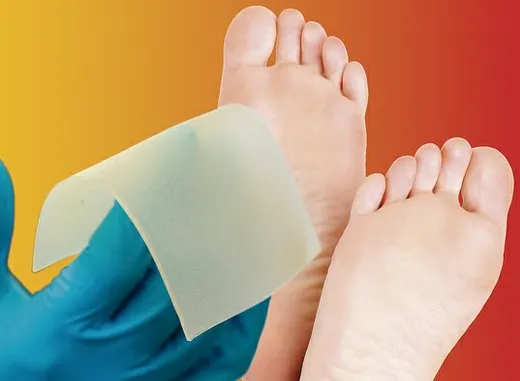With the goal of decreasing the number of lower limb amputations as a result of a bad control of diabetes, Dr. Miriam Verónica Flores Merino, of the Autonomous University of the State of Mexico (UAEMEX), developed a substitute for skin of polymeric origin asAlternative to cure diabetic foot ulcers.
The development created in the Medical Sciences Research Center (CICMME) of the UAEMEX, is similar to a patch or hydrogel mesh, which is designed to be placed on top of newly diagnosed, superficial, or even injuries caused by burns caused by burnsHealing processes can be helped at approximately one month.
This skin substitute is a biomaterial of gelatinous consistency elaborated based on two polymers: polyethylene glycol whose physical and chemical characteristics make it biocompatible with the human body;and the chitosan who is able to promote cell adhesion, the regeneration of the skin, in addition to having a bactericidal action.
The specialist in biomaterials and tissue engineering explained that in order to verify the effectiveness of the skin substitute and their safety, physicochemical analyzes and cellular crops (fibroblast cells) are performed, where it was shown that both polymers are biocompatible and that they have no effectnegative against the human organism.Mechanical exams were also practiced in order to obtain their resistance and elasticity data.
Subsequently, in vitro tests and in murine tests were performed, where the disease was induced to mice, to which they made small incisions, (because they do not develop ulcers), with the purpose of checking the time in which the wounds were regenerated when placedThe skin substitute mesh.
Miriam Flores, who also belongs to the National System of Researchers Level I, explained that the effectiveness of the biomaterial depends on the concentration of both polymers, since they complement each other and each one supplies the disadvantages of the other, so the best combination was sought, toIn order to create a more effective skin substitute.
At the time of looking for both polymers, the importance of the properties of the chitosanof crustaceans) it is more difficult to mold its properties, in order to remedy this body, the capacity of the polyethylene glycol was exploited to make the substitute for compatible skin.
On the other hand, according to figures from the Institute of Health of the State of Mexico (ISEM), in 2012 diabetes was the main cause of death in the Mexican population with 12 thousand 289 deaths.Likewise, one of the clinical alterations of the condition is the ulcer that can lead to the amputation of the members, which leaves sequelae and impacts the quality of life and economy of the patient.
In relation to this, ISEM reported that up to 25 percent of diabetics can be affected with ulceration of the lower limbs, which can subsequently cause amputation.
It should be noted that previously the IPN developed a substitute to regenerate skin with mesenchymal stem cells, however, the life time of the material was short and expensive, unlike the development of the UAEMEX that uses biocompatible polymers, which makes itIts cost decreases and can be preserved up to one year in cooling.
The CICMmed researcher commented that the next step of the investigation is to focus on performing a greater number of tests in cell cultures, as well as in in vivo models and tests in human volunteers, in addition to verifying their treatment in deeper injuries.Already with those basesScientists will think about patenting and marketing it.


